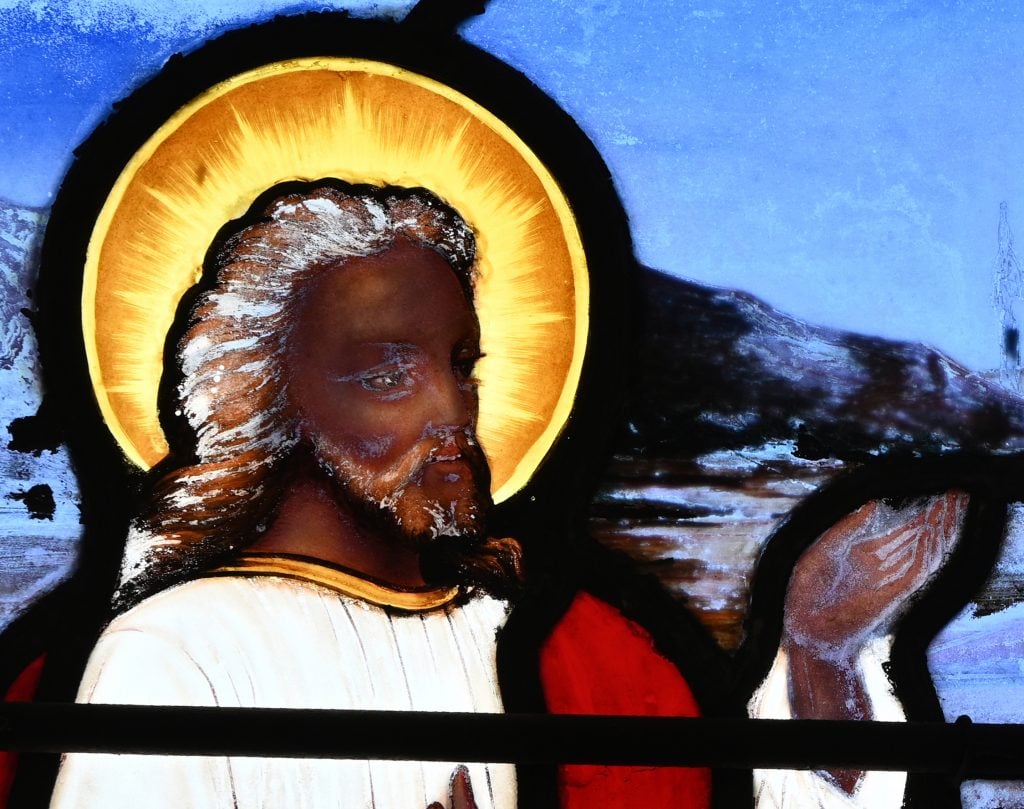Museums & Institutions
A Memphis Museum Acquires the First Stained-Glass Depiction of Black Jesus
The window was found in 2022 by the new owner of the church which housed it.

The window was found in 2022 by the new owner of the church which housed it.

Adam Schrader

A one-of-a-kind stained-glass window depicting Jesus as a Black man has been acquired by the Memphis Brooks Museum of Art in Tennessee.
The window was uncovered at the former Saint Mark’s Church in the Rhode Island city of Warren in 2022. It was made by the studios of the renowned Henry Sharp in 1877, just a decade after the end of the Civil War, and also depicts the Biblical sisters Martha and Mary with brown skin.
Built in 1830, the church closed in 2010 and was sold off by the diocese to member Hadley Arnold and her husband, Peter Arnold, in 2012. Arnold, an art historian and architectural designer seeking to turn the church into her personal home, didn’t notice the skin tones of the Biblical figures until 2022.
The couple enlisted Virginia Raguin, a professor at the College of the Holy Cross in Worcester, Massachusetts, to examine the window and help with researching it.
The church left little records of the window, but it was found to have been donated to the church by a woman named Mary P. Carr in honor of Ruth Bourne DeWolf and Hannah Bourne Gibbs. DeWolf married into a family that made its fortune in the slave trade, while she and Gibbs donated to an organization that helped freed slaves return to Liberia.
Specific details about the acquisition of the work from Arnold by the Brooks Museum were not provided, but it is expected to be moved into the museum’s new 120,000-square-foot building when it opens in 2026.
Arnold and Raguin have maintained a website documenting the process of finding a permanent home for the window and formed formed advisory panels to assist in determining what to do with the artwork.
“The 1877 Black Gospel Window will have pride of place. Standing 12 feet tall and five feet wide, it will be on permanent display in a glass-walled gallery adjacent to a central courtyard, flooded with natural light by day, illuminated and visible from a public courtyard by night,” the Rhode Island team said in an update.
Museum director Zoe Kahr expects that the stained-glass window will “have the pull of a pilgrimage site” especially as Memphis is the nation’s largest Black-majority city with ties to the civil rights movement.
“The window is not only an important part of history, but a powerful piece of art,” chief curator Rosamund Garrett said in a statement. “It’s very rare to find stained glass from this time period that so vividly speaks to issues still relevant today.”
The Rhode Island team held an event attended by 150 people to celebrate the impending send-off of the window when its restoration is complete. Both teams expect to continue research into the history of the work.